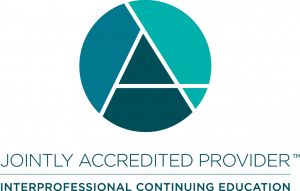CME Online Course
Online Course: 11.5 hours CME credit
Online Course: 11.5 hours CME credit
One day course: 10.0 hours CME credit
Two day course: 20.0 hours CME credit
The Online Hospitalist and Emergency Procedures Course has been completely updated and revised in 2019. Below are examples of lectures that you will receive with your purchase of EITHER the CME Online Course OR any of the Live Hospitalist and Emergency Procedures CME courses. This activity has several sections. The accredited-content portion includes 19 content sections with a pretest, polling questions, videos as well as a posttest. Additionally, you will have access to a bonus module from 2022 on how to perform procedures in patients with thrombocytopenia, cirrhosis or who are on anticoagulation or antiplatelets. The covered topics include:
The Online Course subscription includes complimentary access to the HPC Procedure Video bundle which includes 27 high quality videos that are narrated and demonstrate step-by-step technique on how to perform hospital procedures. These majority of the videos are procedures performed on actual patients. Clinical pearls and common pitfalls associated with hospital based procedures are discussed in detail. The videos are not downloadable but may be accessed indefinitely by internet from any computer, smart phone, or tablet.
After you complete all of the online content, you will be given the opportunity to obtain your CME certificate. To achieve credit, participants will need to complete each of the modules, including answering all pretest questions, polling questions, and posttest questions. They must also score 80% or better on the posttest to earn credit. A CME certificate will be available for download/printing immediately following successful completion of the posttest and course evaluation.
For clinicians who desire additional hands-on procedural training in all of these 20 common hospital procedures, please sign up for one of our Live Hospitalist and Emergency Procedures CME courses. The one-day course provides dedicated hands-on procedural skills lab training with five procedural expert instructors and is certified for 10.0 hours of CME credit. The two-day course provides hands-on procedural skills lab training in the same hospital procedures and is certified for 20.0 hours of CME credit. CLICK HERE to register for one of our live CME courses.
This module will teach you how to perform procedural sedation safely for both children and adults who are either in the ER or admitted to the hospital. Clinicians will learn the proper candidates for procedural sedation, the monitoring necessary for safe procedural sedation, and the pros and cons for different medications that can be used for procedural sedation.
This module will teach you how to manage a difficult airway. The module will cover the options available to you if you are faced with the “Can’t Ventilate Can’t Intubate” scenario. You will learn how to use an intubating stylet (i.e., an Eschmann stylet or bougie), how to place a laryngeal mask airway, how to perform a King tube placement, how to exchange a King tube for an endotracheal tube, and how to perform a Glidescope intubation.
This module will teach you the different options you have for those patients with difficult vascular access and how to choose which option to use. The module will also teach you the proper technique, indications, and contraindications for ultrasound-guided central line placement, ultrasound-guided peripheral IV placement, and intraosseous line placement.
The RUSH exam stands for “Rapid Ultrasonography in Shock” and is a rapid ultrasound exam that can be performed either in the ER or in the hospital for patients with hypotension. The exam is a systematic approach that evaluates the patient’s pump, tank, and pipes. Ultrasound evaluation of the “pump” evaluates the patient for a pericardial effusion, evaluates for depressed left ventricular contractility, and evaluates for right ventricular dilatation that can occur with a massive pulmonary embolus (PE). The RUSH exam also evaluates the “tank” which assesses the inferior vena cava (IVC) for signs of hypovolemia. Finally, the RUSH exam evaluates the “pipes” to assess the aorta for signs of an aortic aneurysm or an aortic dissection and assesses the legs for a deep venous thrombosis that could have led to a PE.
